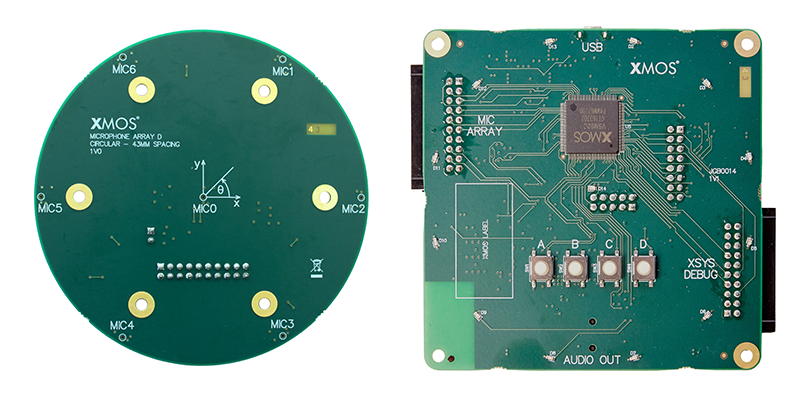By Richard Quinnell, editor-in-chief
Chip vendors appear convinced that voice activation will be the next big wave in design, both for consumer and other applications. It’s easy to see why: Reliable hands-free operation of electronics can provide a big boost to convenience and productivity. So developers are now seeing a wave of development kits for speech processing hitting the market.
Electronic Products recently reported the first ripples of that wave earlier this month with the introduction of Microsemi’s AccuEdge development kit. The kit featured the company’s voice-processing chip in a design aimed at rapid development of an Echo-like smart speaker with an Alexa voice services (AVS) tie-in. Shortly thereafter, Sensory put a face to the voice in such systems with its announcement of chatbot support for its Truly Natural speech-recognition technology.
Now, two more companies are adding to the wave: XMOS and Qualcomm. Both are offering chips that provide the voice-processing front-end to cloud-based speech-recognition systems like AVS and Google Assistant. While a formal announcement of integration with those has not yet been made, it’s a good bet that these new offerings will shortly include such integration.
The XMOS XVF3000 series of voice-processing chips is being released under the VocalFusion brand and aims at smart speaker applications. Two types are available. Both offer advanced audio-processing capabilities such as four-channel microphone support, beamforming, AGC, acoustic echo cancellation (AEC), dereverberation, and full-duplex operation. The devices can also remove from the incoming signal the output audio signal that they are generating, simplifying the implementation of “barge-in” operation so that the user does not have to talk over the speaker in order to communicate with it.

The XVF3000 serves as an audio pre-processor DSP and a control MCU in a combined package. It includes I2C ports for communications to peripherals in standalone operation and a USB port for operation with an external host. The XVF3100 adds to the mix an on-chip ability to detect a trigger keyword, based on Sensory’s TrulyHandsFree technology.
To give developers a head-start on working with far-field voice-control technology, XMOS is releasing two XVF3100-based application-specific development kits pre-integrated with processors and microphone arrays. (“Hello Blue Genie” is the trigger phrase.) A circular version targets systems that need 360° sensing ability, like a smart speaker. For applications in which the system only needs 180° coverage, such as an appliance or entertainment device that will sit next to a wall, a linear array version is also available. Both kits are expected to be available to developers in July at a price of $499 each.
On the heels of the XMOS announcement, Qualcomm entered the market with a new Smart Audio Platform. Unlike the more general VocalFusion, however, the Qualcomm platform seems to be targeting home entertainment system designs. In addition to its far-field voice-processing capabilities, the Qualcomm platform includes Wi-Fi, Bluetooth audio, and AllPlay networked audio capabilities for streaming music playback. The company intends to make its developer platform available in Q3 2017 and has several partner OEMs offering system-on-module products and reference designs for those seeking a quicker development path.
Other companies are also getting into voice processing. Texas Instruments, for instance, offers a reference design based on its 66AK2G02 ARM/DSP combination here on Electronic Products. And more are sure to follow. The era of voice-controlled systems has begun.
Advertisement
Learn more about Electronic Products Magazine





